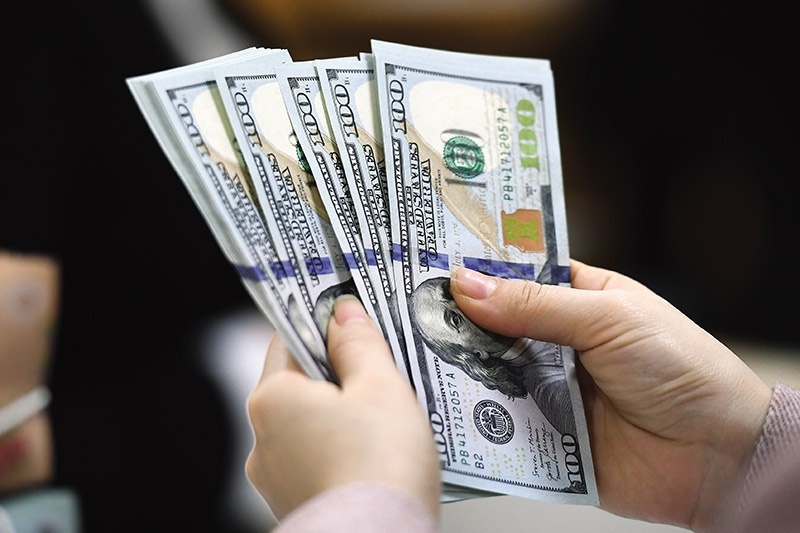Forex reserve fears still stalk economy
In September, the International Monetary Fund reported that Vietnam’s foreign currency reserves had fallen in the first half of the year and equalled only seven weeks’ worth of imports. In response, the State Bank confirmed that reserves were sufficient for the country’s macro economic stability.
According to HSBC’s foreign exchange strategist Dominic Bunning even the local authority’s statements confirmed an increase of $3 billion in first half reserves, its calculations show the reserves currently cover less than the implicit three months’ import target.
“As pressure mounts as the Vietnamese dong weakness, this low level of reserves leaves authorities less well placed to intervene and maintain dong levels,” said Bunning.
In mid-August, the State Bank weakened the dong via the mid-point exchange rate by 2.1 per cent, to VND18,932 per dollar, from VND18,544. The new trading range for the dong has been lifted to VND18,364-19,500 per dollar.
Since the authority shifted the official trading band upwards, the exchange rate has traded higher towards the top of the new band at around VND19,500 per dollar.
At the moment, local banks are allowed to trade the greenback within 3 per cent either side of the State Bank’s interbank mid-point exchange rate. “We believe the currency is still vulnerable from a longer-term fundamental perspective with interest rates too low and limited foreign exchange reserves.
Meanwhile, the cyclical dollar supply shortage will also push USD/VND to the top of the band in the second half of 2010,” added Bunning.
On the other hand, Hanoi and Ho Chi Minh City’s consumer price index (CPI) jumped by 0.96 and 0.97 per cent respectively in September, much higher than previous months. Local securities house BSC forecasted the country’s CPI would increase by 1-1.3 per cent in September.
The Ministry of Finance recently announced that the government would be able to intervene on prices and help contain inflation.
Prakriti Sofat, regional economist at Barclays Capital, said that currency depreciation would support exporters, but also likely add to import price pressures. The bank’s estimates show that a 1 per cent move in USD/VND exchange rate adds roughly 0.15 per cent to inflation.
Bunning agreed that inflation was an issue and one that would only be exacerbated by the recent depreciation.
“However, price controls are a short-term solution to a longer-term issue. In order to better curb inflation, interest rates need to rise, and until they do, the structural imbalances facing the dong will remain,” said Bunning.
In fact, real interest rates turned negative again earlier this year, and the authorities are further encouraging local banks to lower onshore dong lending rates further.
“Given the propensity of consumers to import goods that we have previously noted, attempts to stimulate the economy and achieve targeted growth rates will likely fuel the trade deficit through 2010. This will maintain weakening pressure on the dong,” Bunning said.
What the stars mean:
★ Poor ★ ★ Promising ★★★ Good ★★★★ Very good ★★★★★ Exceptional
 Tag:
Tag:
Related Contents
Latest News
More News
- Credit growth confronts new pressure (January 08, 2025 | 08:00)
- Rate policies to be managed strategically (January 07, 2025 | 16:13)
- 2024 a year of resilience for Vietnam Bank for Social Policies (January 07, 2025 | 13:14)
- Vietnam’s capital market set to diversify in 2025 (January 04, 2025 | 08:00)
- Digital assets now indispensable choice (January 03, 2025 | 18:00)
- Banks expedite massive bond issuances to raise capital before new year (January 03, 2025 | 16:56)
- Experts ponder exchange rate prospects for 2025 (January 03, 2025 | 16:54)
- Experts scrutinise various investment channels in 2025 (January 03, 2025 | 16:45)
- DFC to boost financial inclusion in Vietnam (January 03, 2025 | 16:22)
- Strategic policies towards 2025’s economic goals (January 03, 2025 | 15:22)




















 Mobile Version
Mobile Version